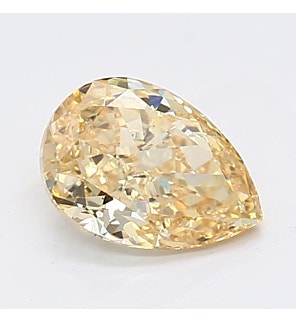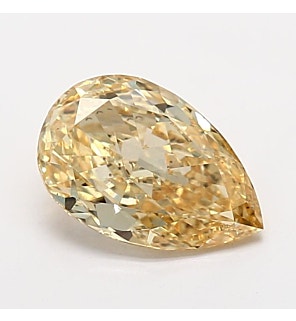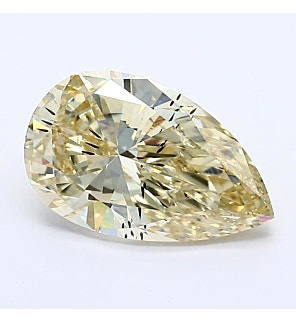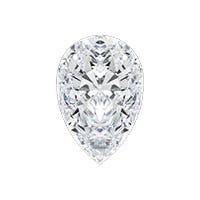Cut — Diamond shape refers to its physical appearance, while the cut refers to how well the diamond’s features interact with light. Because pear diamonds are a “fancy” cut, they are not graded.
However, one good rule of thumb is that when you look at a pear diamond, it should have close to the same sparkle that a round brilliant-cut diamond would because they both have 58 facets.
Clarity — Like many fancy-cut diamonds, pear diamonds need to be scrutinized for clarity or the number of inclusions and blemishes in a stone.
Each diamond has a grade ranging from SI2 (having the largest amount) to VVS1 (having the least).
Pear cut diamonds have the tendency to show a bow tie effect—a shadow in the center of the diamond. Similar to oval diamonds, this is just a talking point to discuss with one of our diamond experts.
Color — Like most fancy shapes, pear diamonds retain their color, making it more obvious if the color is on the warmer side of the scale.
If your loved one prefers whiter diamonds, stick to an H color grade or higher.
Also, be aware that larger pear shaped diamonds may appear to darken slightly towards the point of the stone; this will likely not be an issue for smaller pear diamonds.
However, for larger options, such as 3, 4, or even 5 carat pear shaped diamonds, it may be more noticeable unless you choose a higher color grade.
Carat — As with many diamond shapes, a pear shaped diamond is likely to be more eye-catching the larger it is.
However, pear diamonds often look larger than they should for their carat weight thanks to their larger spread.
A pear shaped diamond that is of a lower carat weight than a round brilliant diamond, for example, may appear larger simply because it is longer.
This means you can enjoy a diamond that looks bigger without having to increase your budget.
LEARN ABOUT THE 4 C'S



